A solid grasp of cap rates will sharpen your analytical edge

Cap Rates Demystified for Real Estate Investors
When you begin to explore real estate investing, you will encounter a lot of new terms and formulas. Among the most important of these is the capitalization rate, or “cap rate.” This simple metric is a powerful tool for quickly assessing the potential return and risk of a commercial real estate property.
Understanding what cap rates are, how they work, and what influences them is fundamental to making sound investment decisions.
This guide will demystify the cap rate for you. We will break down its components, show you how to calculate it, and explain its significance in evaluating investment opportunities. Whether you are just starting or have years of experience, a solid grasp of cap rates will sharpen your analytical edge.
What is a Cap Rate?
A capitalization rate is a ratio used to estimate an investor’s potential return on a real estate investment. It represents the unlevered rate of return, meaning it does not account for debt or financing costs. In its simplest form, the cap rate shows the relationship between a property’s net operating income (NOI) and its market value or purchase price.
Think of it as a snapshot of a property’s performance in a given year. A higher cap rate generally suggests a higher potential return but often comes with greater perceived risk. A lower cap rate typically indicates lower risk but also a lower immediate return. It’s a foundational metric for comparing different properties and markets.
Why are Cap Rates So Important?
Cap rates serve several critical functions for real estate investors.
-
-
Quick Property Comparison: They provide a standardized way to compare the profitability of similar properties. If you’re looking at two apartment complexes in the same submarket, their cap rates give you a quick first look at which one might generate more income relative to its price.
-
Market Assessment: Cap rates are also a barometer for the health and sentiment of a specific real estate market. By tracking the average cap rates in a city or neighborhood, you can gauge whether property values are rising (cap rate compression) or falling (cap rate expansion).
-
Risk Evaluation: The cap rate implicitly reflects the market’s perception of a property’s risk. Assets in high-demand, stable areas tend to have lower cap rates because investors are willing to pay more for the security and predictable income they offer. Conversely, properties in less desirable or transitional areas might have higher cap rates to compensate investors for taking on more risk.
-
Get a Free Multifamily Loan Quote
Access Non-Recourse, 10+ Year Fixed, 30-Year Amortization
How to Calculate a Cap Rate
The formula for the cap rate is straightforward. To calculate it, you need two key pieces of information: the property’s Net Operating Income (NOI) and its current market value or purchase price.
Cap Rate = Net Operating Income (NOI) / Property Value
Let’s break down these components.
Understanding Net Operating Income (NOI)
Net Operating Income is the total income a property generates after subtracting all operating expenses. It is crucial to remember that NOI does not include mortgage payments (debt service), capital expenditures, or income taxes.
NOI = Gross Rental Income + Other Income – Vacancy Loss – Operating Expenses
- Gross Rental Income: The total potential rent if the property were 100% occupied.
- Other Income: Revenue from sources like parking fees, laundry facilities, or vending machines.
- Vacancy Loss: An allowance for units that are unoccupied or tenants who fail to pay rent.
- Operating Expenses: Costs required to run the property, such as property taxes, insurance, management fees, utilities, repairs, and maintenance.
Putting it into Practice: An Example
Let’s imagine you are considering buying a 50-unit apartment building for $10 million.
-
Calculate Gross Potential Income:
-
50 units x $1,500/month rent = $75,000 per month
-
$75,000 x 12 months = $900,000 per year
-
-
Account for Vacancy and Other Income:
-
Let’s assume a 5% vacancy rate: $900,000 x 5% = $45,000
-
Effective Gross Income = $900,000 – $45,000 = $855,000
-
Total Annual Income = $855,000 + $15,000 = $870,000
-
-
Subtract Operating Expenses:
-
Property Taxes: $120,000
-
Insurance: $40,000
-
Property Management (5% of EGI): $42,75
-
Repairs & Maintenance: $60,000
-
Utilities & Other Costs: $30,000
-
Total Operating Expenses = $292,750
-
-
Calculate NOI:
-
NOI = $870,000 (Total Annual Income) – $292,750 (Operating Expenses) = $577,250
-
-
Calculate the Cap Rate:
-
Cap Rate = $577,250 (NOI) / $10,000,000 (Property Value)
-
Cap Rate = 0.0577 or 5.77%
-
In this example, the property has a cap rate of 5.77%. You can now use this figure to compare it to other similar investment opportunities.
What is a “Good” Cap Rate?
This is a common question, but the answer is always “it depends.” A good cap rate is relative and depends entirely on the market, the property type, and your investment strategy.
A 4% cap rate might be excellent for a brand-new apartment building in a prime coastal city, where appreciation potential is high and risk is low. In contrast, a 4% cap rate for an older property in a smaller, less dynamic market might be unattractive. In that secondary market, investors might expect cap rates of 7% or 8% to compensate for slower growth and higher perceived risk.
Generally, you will see lower cap rates for:
- Multifamily and industrial properties in high-growth markets.
- Properties with long-term leases to creditworthy tenants (like a pharmacy or a national grocery store).
- Assets in desirable, economically stable locations.
You will typically find higher cap rates for:
- Hospitality (hotels) or retail properties with more volatile income streams.
- Properties in smaller, tertiary markets or areas with declining populations.
- Older properties that require significant capital improvements.
Factors That Influence Cap Rates
Cap rates are not static; they are dynamic and influenced by several market forces.
-
Interest Rates and Capital Markets
The broader economic environment plays a significant role. When interest rates rise, the cost of borrowing increases. Investors often require higher returns (and thus higher cap rates) to justify taking on debt. Conversely, in a low-interest-rate environment, financing is cheaper, which can drive property prices up and compress cap rates.
-
Economic Growth and Fundamentals
A strong local economy with job growth and population increases creates more demand for real estate. This tenant demand leads to higher rents and lower vacancies, boosting NOI. As properties become more profitable and less risky, investors are willing to pay more, which pushes cap rates down.
-
Asset Type and Class
Different property types carry different levels of risk. Multifamily apartments are often seen as less risky because housing is a basic need, leading to more stable occupancy. In contrast, an office building might face higher vacancy risk if a major tenant leaves. As a result, multifamily assets in a given market often trade at lower cap rates than office or retail properties.
-
Location
Real estate is all about location. A property in a thriving urban core will command a premium and thus a lower cap rate than a similar property in a suburban or rural area. Proximity to amenities, transportation, and employment centers all contribute to a location’s desirability and influence its cap rate.
Actionable Insights for Investors
A cap rate is a powerful tool, but it’s just one piece of the puzzle. It should not be the only metric you use to evaluate a deal. Here are some actionable tips for using cap rates effectively:
- Look Beyond the Number: A high cap rate might signal a great opportunity, or it could be a red flag for underlying problems. Dig into the “why.” Is the NOI inflated? Are the operating expenses unrealistically low? Is the property in a declining area?
- Verify the NOI: Always perform your own due diligence on the income and expense figures. Don’t simply trust the seller’s proforma. Review historical operating statements and be conservative with your future projections.
- Compare Apples to Apples: When comparing cap rates, ensure the properties are truly similar in terms of location, age, asset class, and quality. Comparing a Class A apartment building to a Class C building using cap rate alone is misleading.
- Consider the “Going-Out” Cap Rate: Think about your exit strategy. The “going-in” cap rate is based on your purchase price, but the “going-out” or terminal cap rate is what you expect the market will be when you sell. A conservative investor will assume the exit cap rate is slightly higher than the entry cap rate.
By integrating cap rate analysis into a holistic due diligence process, you can better identify opportunities that align with your financial goals and risk tolerance. It’s a fundamental concept that, once mastered, will serve you well throughout your real estate investing journey.
Source: REEP Equity

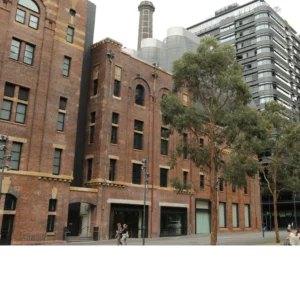
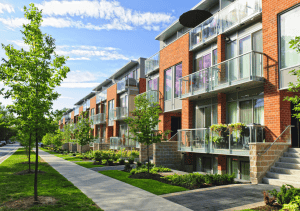
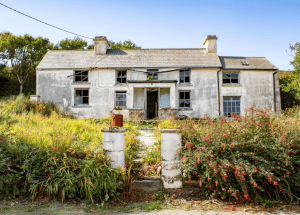

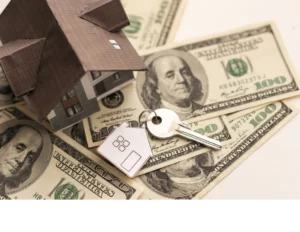
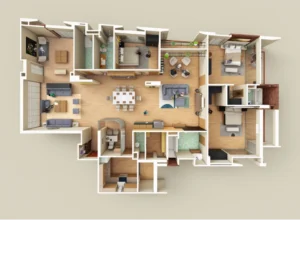






 Accessibility
Accessibility